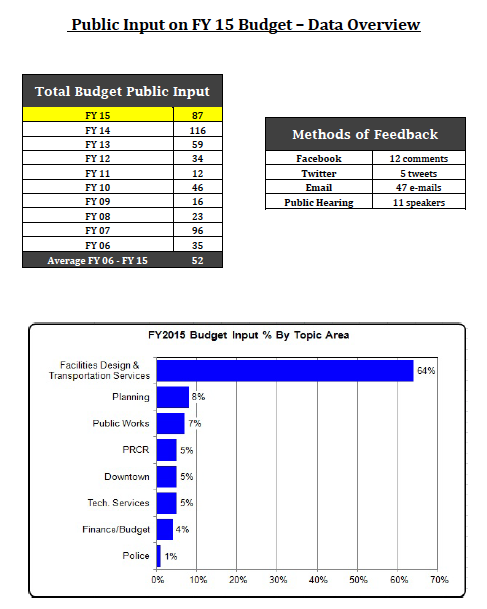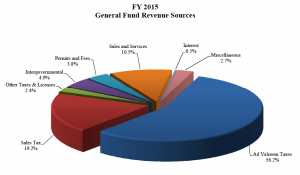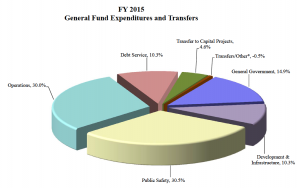
The Town of Cary, North Carolina, was the first local government community in North Carolina to partner with the Center for Priority Based Budgeting (CPBB) in implementing Priority Based Budgeting in 2013. And we couldn't be more thrilled with their "Results!"
Since then, the CPBB has partnered with Gaston County and the Town of Garner to further spread priority based budgeting far and wide across the beautiful State of North Carolina. And once again we've found the results scalable and replicable! We couldn't be more excited!
This recent article, Budgets & Verts, by Laurie Bush from the Cary Citizen details how the Town of Cary has determined the "results" the community stands to achieve and how they've tied these results to their budgeting process. An exemplary model for how priority based budgeting "focuses community resources on results." And how the Town of Cary has utilized the CPBB's priority based budgeting "to ensure that our resources align with the priorities that Council sets for the Town."
Amazing work Laurie Bush and more specifically the Council and leadership of the Town of Cary! The Center for Priority Based Budgeting congratulates your efforts! To read the full article Budgets & Verts read below or click here!
Lori Bush: Budgets & Verts
Unlike the federal government, municipalities must balance our budget and go through a process by which we get public input and balance that with our current and upcoming needs, improvements, operating costs and capital expenditures. You can see what you all told us by reading the public input report.

From Town of Cary - I wrote a bit about the process last year, if you would like to read more.
Priorities
This year, Town staff has utilized a new process called “Priority Based Budgeting.” This is asystem that we used to ensure that our resources align with the priorities that Council sets for the Town. The process starts by defining the goals, then drills down into those goals, identifies the programs and services associated with accomplishing those goals, evaluating the programs, a peer review and finally allocating costs based on those priorities. Council and staff reviewed and finalized the goals at our Council Retreat in January.
Our Council priorities are:
- Attractive Well Planned and Livable Community
- Economic Vitality and Development
- Effective Transportation and Mobility
- Quality Cultural Recreational and Leisure Opportunities
- Reliable, Sustainable Infrastructure
- Safe Community
Overview of the Budget
Here is a quick overview of the items in the budget.
- No tax increase, and NO additional debt
- Limited revenue growth is projected in FY2015 due to the gains in taxable real estate (our main revenue source) being offset by losses in taxable public service property, personal property and vehicle. (More revenue growth is projected after FY2015)
- Remember, we paid a one –time $6M debt reduction payment in 2014, so there IS room for service expansion for FY2015. (Meaning, if we NEED to borrow money, we COULD do so.)
- The General Fund Operating Budget is $137.3M – with is a 3.1% increase over FY2014
- The Utility Fund operating budget is $65M, a 4.8% increase over last year.
- The Capital Improvement budget at $51.2M (a 51% drop from last year)
- Utility rates will increase by 3.7% – a result of rate smoothing to pay for the Western Wake Water Treatment plan – $2.21 more per month for residents using 4,500 gallons of water.
- Construct over 5 miles of new water and sewer lines ($5.3 million)
- Additional 25.5 staff position – still keeping Cary at one of the LOWEST ratios of staff per 1,000 residents (8.2) among largest cities and towns in NC
- Improved public access to Town information is planned, through a website overhaul, public access to Geographical based data, and new workflow software that will allow council meeting videos to be indexed
Some Highlights
The budget document is huge, but broken up into readable components. (But it is still 350 pages!) Here are some highlights that I think folks might be interested in, based on feedback I’ve received.
- Improve the visual appeal of city streets by adding landscaping to existing medians ($150,000) – supported by all of council, and will take about 4 years (with annual funding of $150K) to get to all of the bare medians across town
- Facilitate business development in downtown by creating a small business incentive loan program($120,000)
- Spot improvement in the level of service for Town intersections and streets ($250,000)
- Extending C-Tran evening hours from 8pm-10pm ($139,620)
- Increasing size of buses on two C-Tran high traffic routes ($28,823)
- Improving programming for participants with disabilities ($18,110)
- Adding 6 police officers in northwest Cary ($575,940)
- Adding covered tennis courts at Cary Tennis Park, (part of interlocal agreement, Wake County providing $1M of $4M), renovating existing courts ($300K)
- Build of trail head parking lot on White Oak Greenway ($185K)
- Connection of 2 existing section of Morrisville Parkway on either side of NC540 ($6M, half funded by CAMPO)
- Additional water storage tank in western Cary to ensure adequate water storage ($2M)
- Acquire land for new fire station in Southwest Cary ($800K)
- Resurface over 25 miles of Town streets ($5M)
There are many more details that you can find in the final budget, online.
Keep an eye on the CPBB blog for further updates. Sign-up for our social media pages so you stay connected with TEAM CPBB!
If you're thinking of jumping into the world of Fiscal Health and Wellness through Priority Based Budgeting we would certainly like to be part of your efforts! Contact us to schedule a free webinar and identify the best CPBB service option(s) to meet your organization's particular needs.
















